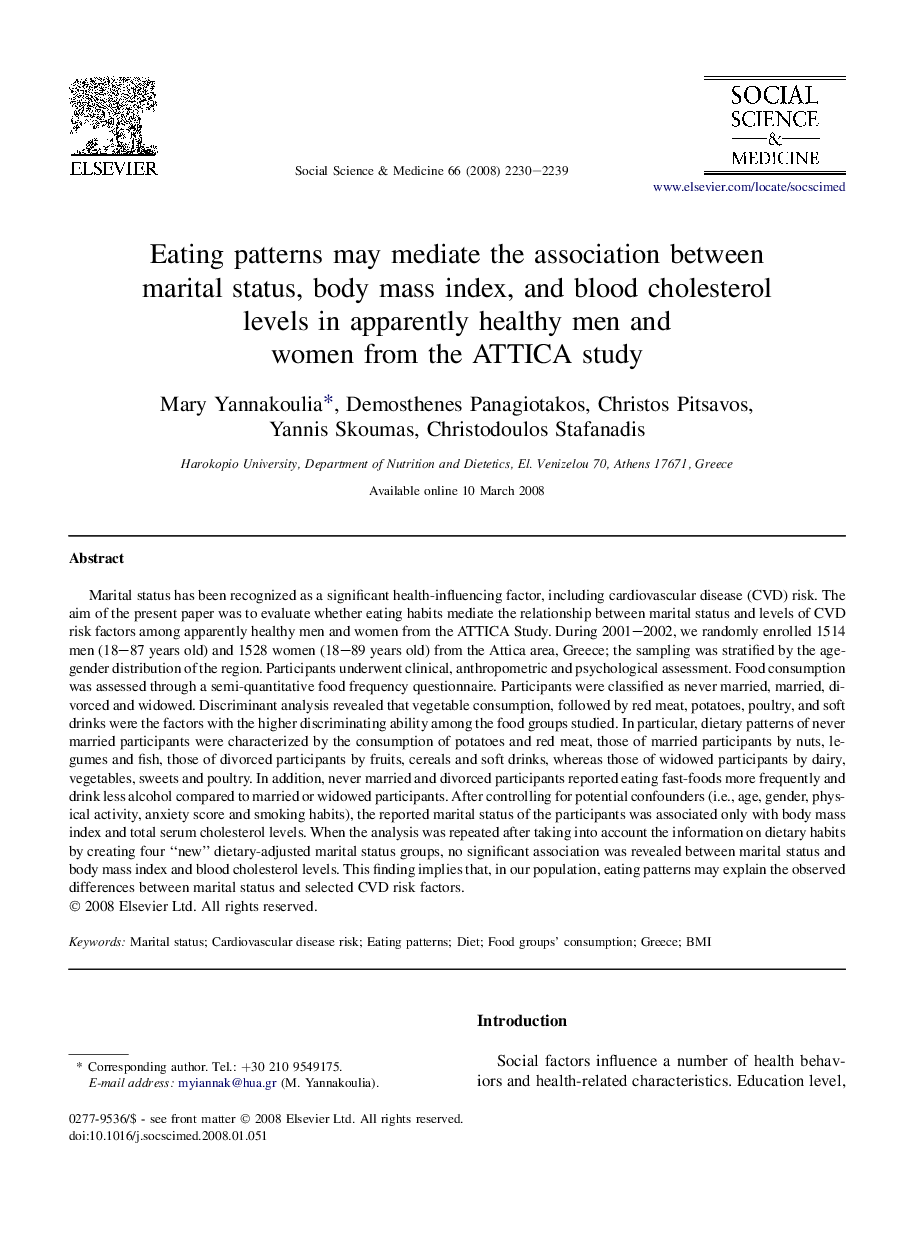| کد مقاله | کد نشریه | سال انتشار | مقاله انگلیسی | نسخه تمام متن |
|---|---|---|---|---|
| 954520 | 927650 | 2008 | 10 صفحه PDF | دانلود رایگان |

Marital status has been recognized as a significant health-influencing factor, including cardiovascular disease (CVD) risk. The aim of the present paper was to evaluate whether eating habits mediate the relationship between marital status and levels of CVD risk factors among apparently healthy men and women from the ATTICA Study. During 2001–2002, we randomly enrolled 1514 men (18–87 years old) and 1528 women (18–89 years old) from the Attica area, Greece; the sampling was stratified by the age-gender distribution of the region. Participants underwent clinical, anthropometric and psychological assessment. Food consumption was assessed through a semi-quantitative food frequency questionnaire. Participants were classified as never married, married, divorced and widowed. Discriminant analysis revealed that vegetable consumption, followed by red meat, potatoes, poultry, and soft drinks were the factors with the higher discriminating ability among the food groups studied. In particular, dietary patterns of never married participants were characterized by the consumption of potatoes and red meat, those of married participants by nuts, legumes and fish, those of divorced participants by fruits, cereals and soft drinks, whereas those of widowed participants by dairy, vegetables, sweets and poultry. In addition, never married and divorced participants reported eating fast-foods more frequently and drink less alcohol compared to married or widowed participants. After controlling for potential confounders (i.e., age, gender, physical activity, anxiety score and smoking habits), the reported marital status of the participants was associated only with body mass index and total serum cholesterol levels. When the analysis was repeated after taking into account the information on dietary habits by creating four “new” dietary-adjusted marital status groups, no significant association was revealed between marital status and body mass index and blood cholesterol levels. This finding implies that, in our population, eating patterns may explain the observed differences between marital status and selected CVD risk factors.
Journal: Social Science & Medicine - Volume 66, Issue 11, June 2008, Pages 2230–2239